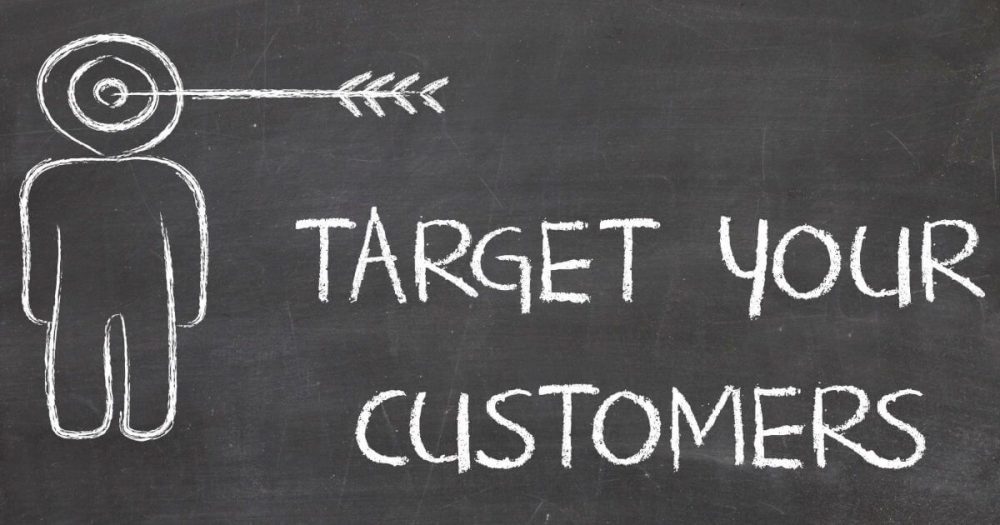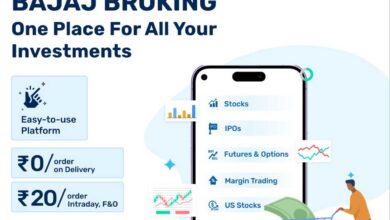Customer Loyalty Measures For Small and Large Companies
Boost Your Business with Proven Customer Retention Techniques
The establishment of a permanent customer base occupies an important place in the business plan of a company and is brought about by the process of customer loyalty. Customers can develop a bond with a business for a variety of reasons – thanks to shared values, necessity, or cost reasons.
To bring this into being, various customer loyalty measures or aids such as the introduction of customer services or the use of e-mail marketing are used. There are even various customer loyalty programs that are not only suitable for large companies but also for small and medium-sized types.
Customer loyalty measures: definition
As the name suggests, customer loyalty measures are actions that a company takes to retain customers and thereby expand its regular customers. If you’ve read our article “What is customer loyalty?” You already know that customer loyalty plays an important role in how well a company performs in the world of marketing.
Because a considerable part of the profit cannot be traced back to new customers, but to regular customers. A successful customer loyalty system uses various measures to ensure long-term loyalty and prevents customers from migrating to the competition.
The different types of customer loyalty
If you intend to convert your company’s occasional customers into your regular customers, then you need to be aware that there are five different customer loyalty routes you can take:
Emotional customer loyalty
This first type of customer loyalty is one of the most important and can be pursued by any type of company – small and large. Because the focus here is on general customer satisfaction and the relationship of trust between the company and customers.
The better these two aspects turn out, the more customers develop into regular customers. Emotional marketing and emotional branding are used in this emotional customer loyalty.
Technical-functional customer loyalty
Companies that use this form of binding offer their customers a technical service that is not compatible with products from other providers.
In this case, customers are dependent on your company when purchasing additional technology and are dependent on it. Such a form of binding is also – with a somewhat negative connotation – as vendor lock-in.
Situational customer loyalty
Imagine the following situation: A hotel offers uncomfortable beds and poor room service. As a rule, this results in customers looking for a room elsewhere for the night.
But since the hotel is the only place for miles that offers a place to sleep, its guests have to be satisfied with the given conditions. So if your company offers products or services that are (next to) nowhere else to be found, it will naturally bind customers to you.
Legal customer loyalty
This form of customer loyalty takes place through the conclusion of a contract. As soon as customers have put in their signature, they are bound to a company until the end of a specified contract period. This can be the case, for example, when subscribing to a magazine or becoming a member of a sports club.
Economic customer loyalty
Finally, for economic reasons, customers can choose to commit to a company. In this case, the focus is on weighing and saving costs, because customers who want to go to a competing provider must expect so-called switching or termination costs. In addition, if you migrate, you will lose all of the advantages in which the current provider has already invested.
Customer loyalty measures and how they work
Just as there are different types, there are also several separate customer retention measures that your company can take to attract repeat customers. We have compiled a few of the most important ones for you:
The right way to deal with customers
It should go without saying, but it must still be noted that friendly and honest interaction is one of the most important principles of customer loyalty. People who are interested in a service or a product want to get the feeling that they and their opinions are valued and that they are at their side with advice and action.
Your company can conjure up this feeling, for example, by offering reliable customer service that is regularly available for questions and queries and that keeps calm even with customers with confirmation bias.
Obtaining feedback and taking it to heart also has a positive effect on the customer-company relationship and is entirely in line with recommendation marketing.
See Also: Five Tips for Good Customer Loyalty
Customer benefits and gifts
Another loyalty strategy is to distribute customer benefits and gifts. Numerous companies design their membership cards with which their customers can collect points with every purchase or use certain service offers.
Likewise, it is not uncommon for bonus programs to be launched in which filling in stamp cards promises discounts, vouchers, and exclusive gifts.
Regular customers, in particular, should be reminded with small gifts of how important their long-term loyalty is to a company. Creative presents for birthdays, Christmas, or company anniversaries are always welcome.
Technical tools
There are various technical tools that you can use to create and strengthen bonds between your company and customers. An important keyword here is email marketing. You can use e-mails and personalized newsletters to keep your customers up to date or to inform them about special promotions.
Especially on special/seasonal occasions, it leaves a positive impression when you surprise your customers with birthday, Easter, or Christmas greetings. However, the e-mails must contain a form of salutation that harmonizes with the target group and the image of your company.
Your company should also make use of social media platforms for customer loyalty. Social commerce offers many options for active customer participation and involvement. Post photos and videos that give you a behind-the-scenes look at your business, or set up a customer community. This can also arouse the interest of potential new customers. There is hardly a place where the bandwagon effect occurs as much as on social media.
Events and projects
Your company can also plan special events that customers can enjoy or even participate in personally. From workshops to series of events to competitions, you have numerous options that your customers may remember for a long time to come.
Or how about if your company (alone or with others) showed social commitment? Fundraising campaigns and other support in crises and/or areas put your company in a good light before the world and thus also before your customers.
Loyalty program: types and examples
Customer loyalty programs (also known as loyalty programs) are used in many different ways in many companies. They are a marketing strategy that builds on the customer’s drive to collect and creates loyalty based on the prospect of future rewards.
If you are now wondering whether you should establish a customer loyalty program in your small or medium-sized company, then let me tell you that such a marketing strategy is not only profitable for the very big ones. If you intend to create a long-term relationship with your customers or to increase the overall attractiveness of your company, then the use of a loyalty program can do just that. In addition, customer loyalty in smaller companies is often much more intimate.
To show you what types of customer loyalty programs exist, we have listed five different ones that are successfully used:
Step by step – the step-by-step program
With this type of loyalty program, a company offers its customers different levels of loyalty, which they can gradually climb through purchases or promotions. As with wedding anniversaries, these levels are often named after metals and can range from bronze to platinum.
Each one offers exclusive advantages, with the highest naturally containing the most attractive to create a desirable impression on customers.
For example, the underwear company ThirdLove uses one such loyalty program. Here customers can climb three levels and thus get hold of several rewards from an annual birthday present to exclusive seasonal offers. With customers who feel a high degree of loyalty to a company, the up-selling of products also often bears fruit.
The feeling of connection – the community program
With a joint program, your company provides its customers with a platform on which the focus is on personal exchange on topics that revolve around your products, services, and brand.
The cosmetics retailer Sephora has a community with over five million members who can chat, take part in challenges, and find out about events. As a result, Sephora can always be sure of up-to-date customer feedback and is also a big player in dialogue marketing.
Point by point – the points program
This program is one of the most popular because it follows a simple principle: Earn points by shopping with us. Customers have a points account here that fills up with every product they buy. As soon as a certain number has been reached, the points can be exchanged for various bonuses – from discounts to gifts. One company that uses this program is Lidl, for example. The discounter offers its customers an app called Lidl Plus, which they can use to collect points with their purchases and exchange them for discounts.
For a good cause – the charity program
As mentioned earlier, a company can also strengthen customer loyalty by demonstrating social engagement. This measure can also be incorporated into a loyalty program by using charity as a component or basic building block.
For example, your company could donate part of its income to a good cause or offer its customers loyalty rewards in the form of donations.
For example, a popular New York restaurant called Hatch has taken advantage of its Long Island location and supported two conservation programs to help conserve local waterways. Hatch donated five dollars for every diner who went to the restaurant.
Together with the goal – the partner program
Business partnerships can also have a positive effect on customer loyalty. With a single-partner program (cooperation with another company) or multi-partner program (cooperation with at least two companies), you can meet the needs of your customers even more and increase the options from which they can choose.
So if you have a business that sells computer keyboards, for example, you might want to work with a company that markets mouse pads. The sporting goods supplier Nike, for example, cooperates with Apple and offers access to Apple Music on its “Nike Run Club” app.
Paid Privileges – The Paid Program
Another alternative would be to offer a (time-limited) program that is only made available to customers who are willing to pay for it. We are talking about memberships that contain various advantages or special offers.
Members often receive VIP status or another title that sets them apart from other customers. A well-known application example for this is the Prime membership at Amazon, which comes up with free premium shipping and a lot of other content.
For subscribers only – the subscription program
If you pause and wonder whether paid programs are not the same thing as paid membership programs, then we can answer that question with a resounding no.
Subscription programs differ in that you can offer your customers a temporary offer that is sealed with a one-time purchase and does not require a monthly fee.
Coffee supplier Bean Box offers a creative form of this program. Here, customers can take out a subscription for various coffee beans and never have to go without their morning coffee again during this period.








